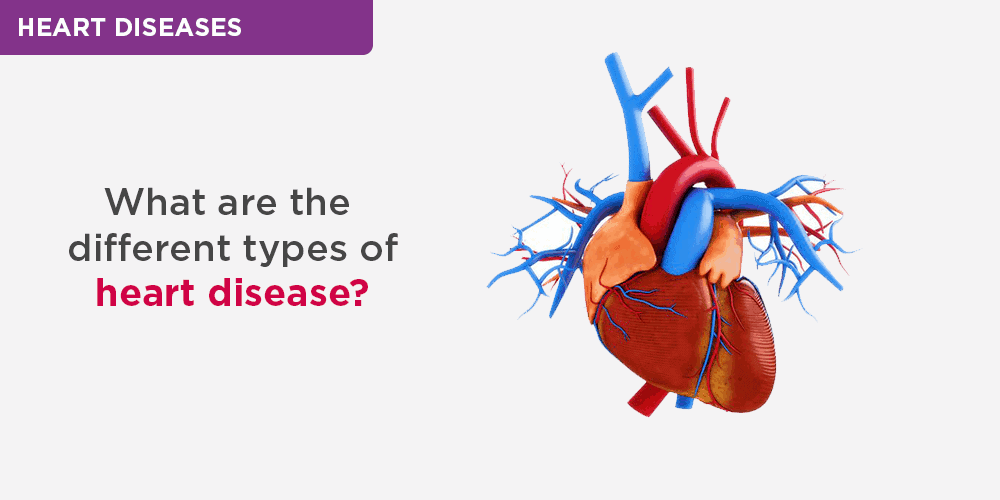Heart diseases refer to any condition affecting the function and/ or the structure of the heart or the major blood vessels. It includes atherosclerosis of coronary arteries or other major arteries, heart failure or cardiomyopathy, cardiac valve disease or heart rhythm disorders among others.
Cardiovascular disease is one of the main causes of death globally in developed economies.
In Singapore, according to the Singapore Heart Foundation, 17 people die every day of cardiac dysfunction and an estimated 1 in 3 deaths in Singapore occur due to heart disease. Cardiovascular disease is the leading cause of death in the United States where the American Heart Association is making an effort to reduce death caused by any heart condition.
Across the EU, heart disease is a leading cause of death, accounting for over 1 900 000 deaths in 2015. Ischaemic heart diseases, which include heart attack and other diseases, and stroke are the most common causes of death from heart disease.
In most cases, heart disease and cardiovascular disease are interchangeable terms referring to the narrowing or blocking of blood vessels which can lead from a heart attack to a stroke.
Types of heart disease
There are many types of heart disease. Cardiovascular disease can be grouped according to how they affect the function or structure of the heart.
Atherosclerosis
It is a hardening of the arteries due to the clogging of fatty deposits which restricts the flow of blood leading to a blockage. Individuals, including young adults, may suffer from atherosclerosis but not experience any symptoms until at least half their arteries are blocked.
If it involves the coronary arteries, the patient has coronary artery disease. If atherosclerosis takes place in the cranial arteries, the patient is at risk of a stroke. Multiple strokes can put a patient at risk for dementia.
Coronary artery disease
Coronary artery disease (CAD) is considered the most common type of heart disease. It develops when atherosclerosis develops in the arteries supplying blood to the heart muscle. As a consequence, arteries narrow and harden, reducing oxygen flow to the heart muscle.
The consequences of untreated CAD include angina, heart attack, heart failure and even sudden death. It is also not uncommon for CAD to first present as an out-of-hospital collapse.
Cardiomyopathy
It is a condition where the heart muscle function is impaired. As a result, it gets more difficult for the heart to pump enough blood throughout the body.
There are many types of cardiomyopathy. Broadly, the main types are dilated cardiomyopathy (weak heart), hypertrophic cardiomyopathy (thick heart muscles) and restrictive cardiomyopathy (rigid heart walls). Each of these broad categories has multiple causes, including chronic uncontrolled hypertension, diabetes mellitus and excess alcohol consumption.
Heart valve disease
Heart valves keep blood flowing in the right direction. In some cases, one of the four heart valves doesn’t open or close properly which increases the risk of heart conditions. In more severe cases, patients will require surveillance and may need heart valve surgery, either to repair or replace the affected heart valve(s).
Arrhythmia
This is a heart rhythm abnormality that affects the function of the organ. They can be either too fast (tachycardia), too slow (bradycardia), erratically (atrial fibrillation), or a combination of the three (sick sinus syndrome).
People who suffer from this condition have palpitations (heart racing) or a skipped beat sensation. In more severe cases, they can experience breathlessness or even fainting spells.
Atrial fibrillation (AF) is a specific heart rhythm disorder that increases the patient’s risk of stroke if not detected and/or treated. Unfortunately, stroke is the first presentation in about 30-40% of cases where AF is newly diagnosed.
Causes
Causes can vary depending on the type of heart disease. Some causes of heart disease are genetic while others are medical conditions.
Risk factors for heart disease include a family history of early heart disease. Modifiable risk factors include low physical activity levels, smoking, unhealthy diet, excessive intake of alcohol, and excess stress and anxiety. These can lead to diabetes, high cholesterol and obesity.
Signs and Symptoms
As there are different types of heart conditions, the symptoms of heart disease may vary.
Generally speaking, chest or epigastric discomfort, shortness of breath and discomfort in the front of the neck are specific symptoms for CAD. These symptoms may be confused with gastric pain, muscle aches or even the natural progression of age.
People with cardiomyopathy generally may have no symptoms, however some experience an unexpected fast heart rate (tachycardia) in the early stages. If they do have symptoms, the affected individual may experience fatigue, bloating, dizziness, coughing when lying down, swelling of the legs, irregular heartbeat and shortness of breath.
People who have arrhythmia have abnormal heart rhythms. As a result, they may experience symptoms such as slow pulse, pain in the chest, racing heartbeat and dizziness.
Stroke is also the first presentation of atrial fibrillation in about 30-40% of newly diagnosed cases.
More subtle symptoms of heart disease include shortness of breath, chest discomfort, tightness, heaviness, or inter-scapular discomfort with mild exertion, especially if it is a recent onset. Initially, symptoms may go away with rest. As the heart condition deteriorates or progresses, symptoms will occur with decreasing effort (reducing effort tolerance) and eventually persist even during rest.
Be aware of your symptoms and use your effort tolerance as a baseline.
Prevention
A heart healthy lifestyle can often lower a person’s risk of heart disease. Lifestyle changes can help prevent or delay atherosclerotic coronary artery disease (CAD), the most common type of heart disease, and reduce the risk of atrial fibrillation, which is a significant cause of stroke.
While there are non-modifiable risk factors and hereditary heart defects, healthy heart health habits like regular physical activity, not smoking and moderation in diet can help in preventing or delaying heart disease complications.
Other heart healthy habits include practicing mindful eating with a healthy diet, getting adequate sleep duration and quality, good dental hygiene and regular checks with your cardiologist or family physician.
Complications
Late detection of heart disease may increase risk of complications. Untreated heart disease increases the risk of the following most common complications:
- Premature death
- Heart attack
- Heart failure
- Stroke
Treatments
The treatment for heart disease that your cardiologist prescribes will depend on the type of and severity of heart disease and pre-existing medical conditions.
Coronary Artery Disease
Optimal medical therapy (OMT)
Your doctor will advise you to maintain heart healthy habits – quit smoking, adopt a healthy diet, start regular physical activity – and be compliant to medications prescribed to mitigate symptoms, reduce the progression of disease, and lower the risk of complications.
You will also need to undergo surveillance for cardiac disease progression. If cardiac condition is not adequately managed with just OMT, you may need procedural management.
Revascularization Procedures
Revascularization procedures in treatment of CAD includes
- Percutaneous coronary intervention (PCI) and
- Coronary artery bypass grafting (CABG)
Whether revascularization is required depends on the location of stenosis, the severity of stenosis, the presence or absence of a weakened heart, and the presence or absence of diabetes mellitus.
For example, present evidence shows that revascularization especially with CABG is beneficial if there is significant left main coronary artery (LMCA) blockage.
The prevalence of significant LMCA blockage is estimated to be between 2.5%–17.5% of patients undergoing cardiac catheterization in various clinical presentations. Up to 5% of significant LMCA blockage patients may not have symptoms.
Revascularization procedure is also required if a patient still has angina symptoms despite OMT.
- Percutaneous coronary intervention (PCI)
PCI is a minimally invasive procedure to treat blocked coronary arteries. Patients who undergo this procedure have improved blood flow and reduced severity of their symptoms such as chest pains.
It involves threading a catheter, which is a thin and flexible tube, into the coronary artery in the heart via the radial artery in the wrist or the femoral artery in the groin.
A balloon is then advanced across the blockage and inflated to compress the fatty tissue and enlarge the blood vessels in the heart. A stent is used to keep the blood vessels in the heart open. This is followed by concomitant OMT to reduce risk of sudden or chronic re-blockage in culprit or new coronary arteries.
There are small but distinct risks and potential serious complications associated with this procedure. Not all blockages in the coronary artery require this procedure.
- Coronary artery bypass graft (CABG)
This is a surgical procedure done by the cardo-thoracic surgeon under general anaesthesia. It involves taking healthy blood vessel(s) from the chest, arm, or leg to bypass the blocked coronary artery of the heart. By doing so, blood bypasses the blockage by going through the new grafted blood vessel to restore blood flow to the heart muscle.
There are also risks associated with this procedure and a cardiologist will be able to advise you on whether you are suitable for this heart procedure.
Valvular heart disease
Certain significant valve conditions will require surgery for therapy. Medical therapy may not be sufficient for good outcomes. Surgery may include valve repair, or valve replacement. Examples of such valve conditions include aortic or mitral valve disease (e.g. significant stenosis or incompetence).
If valve disease is suspected, see your cardiologist for management. This will include confirmation and grading of severity of disease, decision on whether surgery is required, and if surgery is not yet required, surveillance of valve lesion progression to determine optimal timing of intervention.
Conclusion
Heart disease is a major cause of death in Singapore and other parts of the world. Heart disease symptoms can appear in various forms as outlined above and can be subtle or asymptomatic.
If you suspect you have a heart condition, it’s best that you visit a cardiologist for a thorough evaluation.
Most heart conditions can be managed and prevented through a combination of medication, and adopting a heart healthy lifestyle.
Selected heart conditions require prompt diagnosis, assessment and surgical or procedural intervention. Medications or lifestyle adjustments may not be enough.
It can be confusing navigating through the heart health landscape. Speak to your cardiologist, who should be able to advise you on heart health matters.
Book an appointment with Dr Gerard Leong by clicking here today for an assessment or second opinion.




